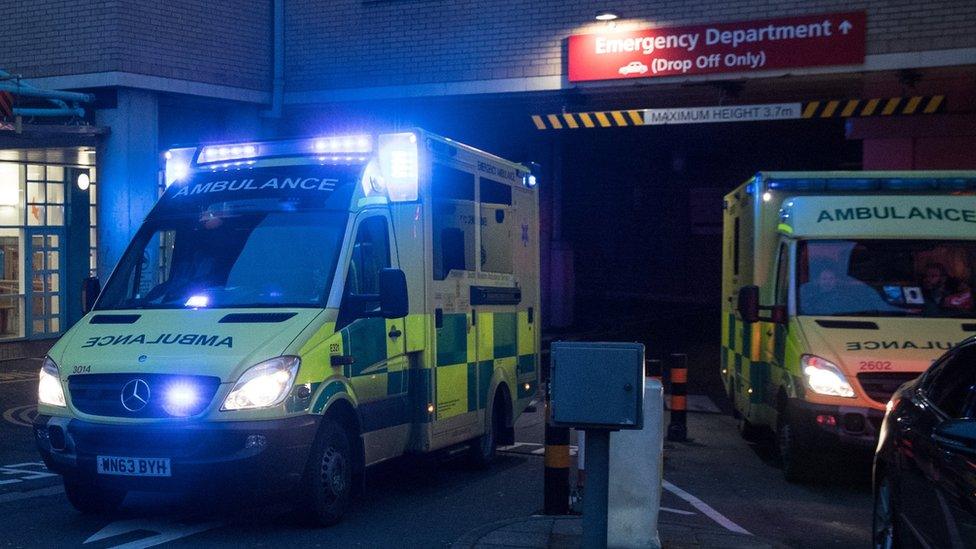Fewer people injured in violent attacks - A&E data study
- Published

Experts at Cardiff University said the rise of 'high harm' crimes amid falling overall violence was 'difficult to explain'
Overall levels of violence in England and Wales are on the decline, in spite of an increase in knife crime, a study of A&E data suggests.
Analysis by Cardiff University found admissions of patients injured in violent attacks dropped 1.7% in 2018.
It indicates a rise in knife crime, gun crime and homicide recorded by police is not part of a wider upsurge.
The study's authors said the rise of "high harm" crimes amid falling overall violence was "difficult to explain".
The National Violence Surveillance Network (NVSN) survey has recorded a near consistent downward trend in violent crime since it was launched in 2002, although levels have remained relatively stable in recent years.
Experts analysed data collected from a sample of 126 A&E departments, minor injury units and walk-in centres across Wales and all nine regions of England.
They estimate 187,584 people attended A&E with injuries sustained in violence in 2018 - 3,162 fewer than the previous year.

Killed in 2019: The UK's first 100 victims

Motives and circumstances behind killings have varied - as have the age and gender of the victims.

The National Violence Surveillance Network also suggested fewer younger people sought hospital treatment, which they said was "contrary" to public perceptions of a violent crime "epidemic" among teenagers.
However, there was a small increase in the number of women who were attacked and injured and a rise of more than 5% among both men and women aged 51 and over.
The figures give a different impression to police data, which suggests violent crime recorded by police in England and Wales rose 19% in the 12 months to the end of September.


The picture on violent crime in England and Wales can be confusing, with so many different sets of figures apparently telling us lots of different things.
The police statistics partly depend on the public's willingness to report offences - and to a larger extent on how accurately forces record them.
Since 2014, police forces have improved their recording processes, which in turn has contributed to an apparently significant rise in offending.
The increase has also been driven by the inclusion within the category of "violent crime" of offences such as harassment.
The police figures are a reliable indicator of high-harm violence, such as robbery, knife crime and murder - these are less affected by recording changes.
But for overall trends, it's better to use data from the official Crime Survey of England and Wales - whose methods haven't altered - and Cardiff University's study. They both tell the same story - a sustained reduction in violence over many years.
- Published24 January 2019

- Published8 March 2019
